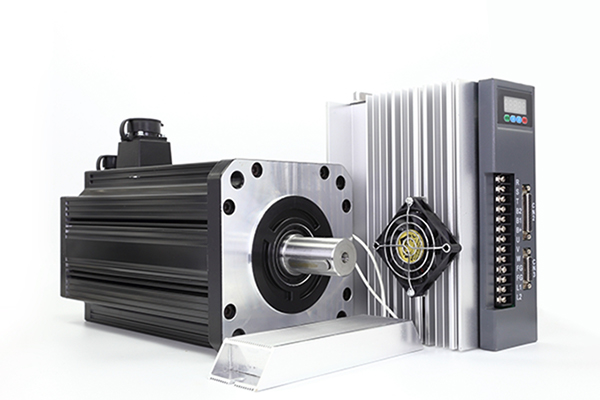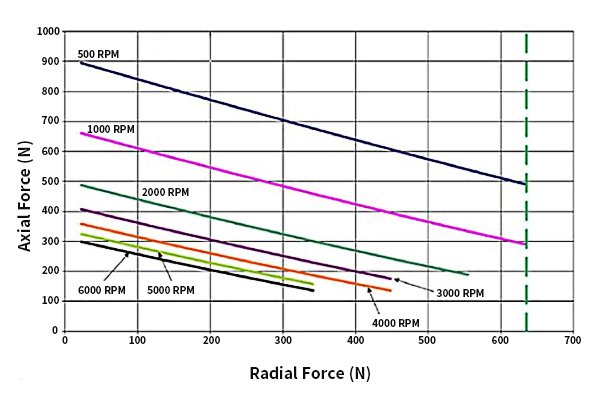What is Number of Poles in Servo Motor?
Servo motors are critical components in various industrial applications, ranging from robotics to manufacturing processes. One key parameter that significantly influences the performance of a servo motor is the number of poles.
The number of motor pole pairs of a servo motor is the number of poles required to turn the motor one revolution. Simply put, it is one of the parameters used to characterize a servo motor. The motor pole pair number affects the operation speed, precision, stability and other aspects of the motor. So, how do we understand the electric servo motor motor pole pair number? The following will be introduced in steps.
1. Definition of the number of motor pole pairs.
The size and number of poles and windings in a motor have a significant impact on the performance of the motor. The number of motor pole pairs refers to the number of magnetic poles required for one revolution of the motor. The more the number of motor pole pairs, the slower the motor's movement speed, but the higher the precision and stability; on the contrary, the less the number of motor pole pairs, the faster the movement speed, but the precision and stability of the motor's movement is a little worse.
2. The relationship between the number of poles and the speed of the motor.

For a given controller and motor, when the number of poles of the motor is reduced, the theoretical maximum speed of the motor will increase, but its low speed performance will decrease. When the torque is approaching the maximum torque, the improvement in low speed performance is limited.
3. The effect of the number of motor poles on positioning accuracy.

The permanent magnets in the rotor of a motor are divided into a certain number of pole pairs, and the windings in the stator are also divided into a certain number of phases, where a phase is defined as a number of pole pairs spaced apart. The more pole pairs the motor has, the more pole pairs there will be in each phase of the stator as the motor makes one revolution. This allows for more positioning information and therefore higher positioning accuracy.
4. The number of motor pole pairs affects the electromagnetic characteristics of the motor.
The performance of a motor is related to its electromagnetic characteristics. The number of motor poles has a significant effect on the electromagnetic characteristics of a motor. For example, a electric servo motor with no current applied is affected by the flux distribution and is stationary at a certain angle. When the power supply provides the required current, it adjusts the motor flux distribution so that the motor can rotate. If these details are studied thoroughly, the motor can be further selected to fit the control requirements and provide better control responsiveness and stability to the system.
Servo motor motor pole logarithm is one of the important parameters to describe its characteristics and operating effects. Mastering the concept of motor pole logarithm and its effect on the motor characteristics, we can better select the motor and controller suitable for their applications.
The number of motor pole pairs of a servo motor is the number of poles required to turn the motor one revolution. Simply put, it is one of the parameters used to characterize a servo motor. The motor pole pair number affects the operation speed, precision, stability and other aspects of the motor. So, how do we understand the electric servo motor motor pole pair number? The following will be introduced in steps.
1. Definition of the number of motor pole pairs.
The size and number of poles and windings in a motor have a significant impact on the performance of the motor. The number of motor pole pairs refers to the number of magnetic poles required for one revolution of the motor. The more the number of motor pole pairs, the slower the motor's movement speed, but the higher the precision and stability; on the contrary, the less the number of motor pole pairs, the faster the movement speed, but the precision and stability of the motor's movement is a little worse.
2. The relationship between the number of poles and the speed of the motor.

For a given controller and motor, when the number of poles of the motor is reduced, the theoretical maximum speed of the motor will increase, but its low speed performance will decrease. When the torque is approaching the maximum torque, the improvement in low speed performance is limited.
3. The effect of the number of motor poles on positioning accuracy.

The permanent magnets in the rotor of a motor are divided into a certain number of pole pairs, and the windings in the stator are also divided into a certain number of phases, where a phase is defined as a number of pole pairs spaced apart. The more pole pairs the motor has, the more pole pairs there will be in each phase of the stator as the motor makes one revolution. This allows for more positioning information and therefore higher positioning accuracy.
4. The number of motor pole pairs affects the electromagnetic characteristics of the motor.
The performance of a motor is related to its electromagnetic characteristics. The number of motor poles has a significant effect on the electromagnetic characteristics of a motor. For example, a electric servo motor with no current applied is affected by the flux distribution and is stationary at a certain angle. When the power supply provides the required current, it adjusts the motor flux distribution so that the motor can rotate. If these details are studied thoroughly, the motor can be further selected to fit the control requirements and provide better control responsiveness and stability to the system.
Servo motor motor pole logarithm is one of the important parameters to describe its characteristics and operating effects. Mastering the concept of motor pole logarithm and its effect on the motor characteristics, we can better select the motor and controller suitable for their applications.
Post a Comment:
You may also like:

Category
Featured Articles
Troubleshooting of Servo Motor
 Servo motors play a crucial role in various industrial applications, providing precision control and efficient performance. ...
Servo motors play a crucial role in various industrial applications, providing precision control and efficient performance. ...
 Servo motors play a crucial role in various industrial applications, providing precision control and efficient performance. ...
Servo motors play a crucial role in various industrial applications, providing precision control and efficient performance. ...Safety Precaution For Using Servo Motor
 In the realm of industrial automation, servo motors play a crucial role in achieving precision and control. These devices are ...
In the realm of industrial automation, servo motors play a crucial role in achieving precision and control. These devices are ...
 In the realm of industrial automation, servo motors play a crucial role in achieving precision and control. These devices are ...
In the realm of industrial automation, servo motors play a crucial role in achieving precision and control. These devices are ...Why Use Servo Motor as Test Load?
 Dynamometer is mainly divided into two parts: cabinet and frame, while the frame mainly has the motor under test, torque speed ...
Dynamometer is mainly divided into two parts: cabinet and frame, while the frame mainly has the motor under test, torque speed ...
 Dynamometer is mainly divided into two parts: cabinet and frame, while the frame mainly has the motor under test, torque speed ...
Dynamometer is mainly divided into two parts: cabinet and frame, while the frame mainly has the motor under test, torque speed ...Difference Between Servo and Stepper ...
 Servo motor and stepper motor are almost used in all automated industries where high precision is to be achieved. Though servo ...
Servo motor and stepper motor are almost used in all automated industries where high precision is to be achieved. Though servo ...
 Servo motor and stepper motor are almost used in all automated industries where high precision is to be achieved. Though servo ...
Servo motor and stepper motor are almost used in all automated industries where high precision is to be achieved. Though servo ...